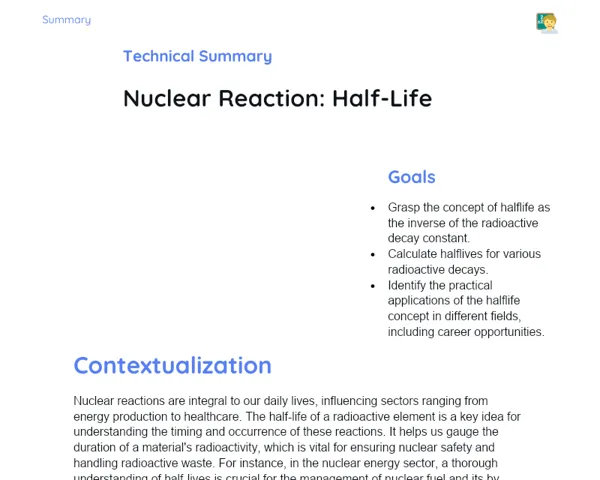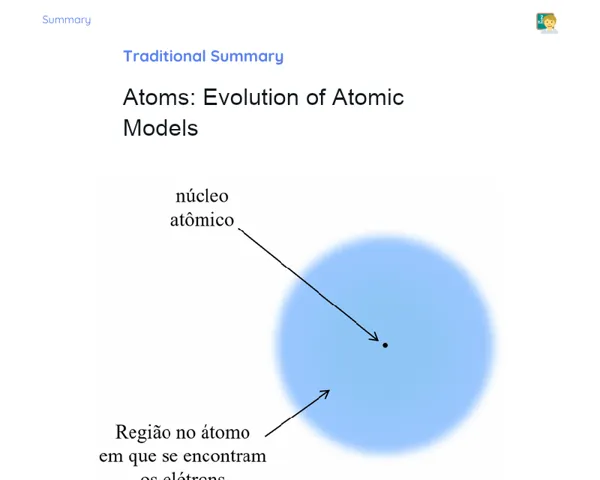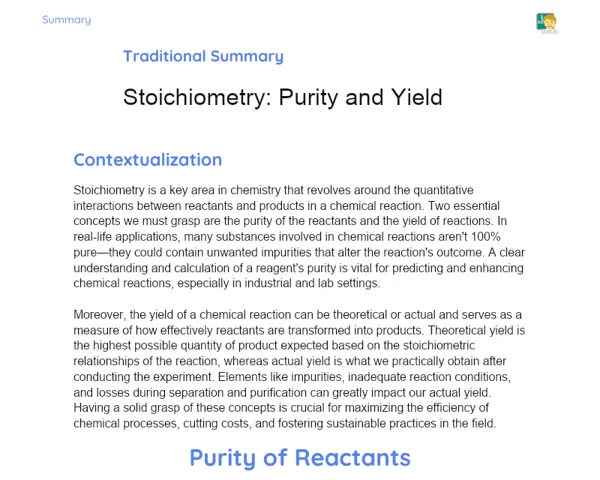Goals
1. Understand the concept of molarity as the ratio of the number of moles of solute to the volume of solution.
2. Learn how to calculate the molarity of a solution based on the data given.
3. Recognize the significance of molarity in various contexts, including the pharmaceutical and food sectors.
4. Get acquainted with the units of measurement used in molarity calculations.
Contextualization
Molarity is a key concept in chemistry that helps us understand solution concentration. For instance, when preparing a medication, it's vital to have the right amount of active ingredient for it to be effective and safe. Knowing how to calculate molarity ensures that we prepare solutions with the exact concentration required, preventing errors that could lead to serious issues. Furthermore, molarity plays a critical role across many scientific fields and industries, from food processing to the innovation of new materials.
Subject Relevance
To Remember!
Definition of Molarity
Molarity (M) is a measure of concentration that indicates the amount of solute in moles found in one liter of solution. It’s one of the most common methods for expressing solution concentration in chemistry, particularly in labs and industrial settings.
-
Molarity is defined as the ratio of the number of moles of solute to the volume of solution in liters.
-
The formula to calculate molarity is M = n / V, where 'n' is the number of moles of solute and 'V' is the solution's volume in liters.
-
Molarity is essential for preparing solutions with accurate concentrations, vital for many scientific and industrial applications.
Calculating Molarity
To determine molarity, you need to know the quantity of solute (in moles) and the volume of the solution (in liters). The molarity is obtained by dividing the number of moles of solute by the volume of the solution.
-
Find the mass of the solute and convert it to moles using the compound's molar mass.
-
Measure the volume of the solution in liters.
-
Use the formula M = n / V to calculate the molarity.
Units of Measurement
Units of measurement are crucial for accurately expressing molarity. The most common units are 'mol' for the amount of substance and 'liter' for the volume of the solution.
-
The mole is the SI unit for the amount of substance.
-
Liter is the volume unit used in chemistry for solutions.
-
Accuracy in measuring mass and volume is vital for correct molarity calculations.
Practical Applications
-
Pharmaceutical Industry: Molarity helps to prepare medications with precise dosages, ensuring safety and efficacy.
-
Food Industry: Molarity is essential for managing the concentration of preservatives and additives in food and drink.
-
Biotechnology: Solutions of varying molarities are used in various laboratory techniques.
Key Terms
-
Molarity: Concentration of a solution expressed as the number of moles of solute per liter of solution.
-
Mole: SI unit for measuring the quantity of a substance.
-
Volume: The space that a substance occupies, measured in liters in the context of solutions.
Questions for Reflections
-
How does accuracy in measuring molarity impact the quality and safety of pharmaceutical products?
-
What might happen if there's an error in calculating molarity in food production?
-
In what other areas of science and industry can knowledge of molarity be applied?
Practical Challenge: Preparing Solutions with Accuracy
This mini-challenge aims to reinforce students' understanding of calculating and preparing solutions of a specified molarity.
Instructions
-
Form groups of 3 to 4 students.
-
Each group must calculate the solute amount needed to make 100 mL of a 0.5 M NaCl solution.
-
Use a precise scale to weigh the solute, then dissolve it in distilled water until reaching 100 mL.
-
Verify the molarity of the prepared solution.
-
Record the calculations and the preparation steps for the solution.



